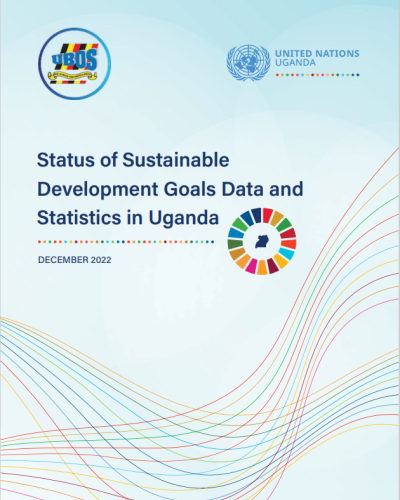Status of Sustainable Development Goals Data and Statistics in Uganda

Uganda’s Vision 2040 provides development paths and strategies towards a society transformed from a peasant one to a modern and prosperous country within 30 years. This vision is realized through the Comprehensive National Development Planning Framework and articulated through three 10-year and six five-year National Development Plans (NDPs) which provide a framework for achieving the country’s long-term development objectives. To date, two NDPs have been implemented. Uganda is now implementing its third NDP (NDP III), which runs from FY2020/2021 to FY2024/2025 with the 17 SDGs and their targets fully integrated. In addition, the United Nations Sustainable Development Cooperation Framework 2021-2025[1] articulates the United Nations’ collective response to support the Government of Uganda in meeting national priorities and addressing gaps as it works towards achieving the NDPIII and SDG targets. In recent years, these obligations have significantly increased the demand for more timely, high quality and disaggregated data. The NSS has sought to respond effectively to these data reporting requirements by using the existing legal infrastructure, coordination mechanisms and statistical strategies.
Despite these intensified efforts by government and its partners, Uganda was able to report on only 92 (46 percent) out of 201 applicable indicators in its 2020 Voluntary National Review.[2] By 2022, the number of indicators for which data is available had increased to 119 (59 percent). However, that number is still inadequate and some of them are proxy indicators, which is unsatisfactory. As part of efforts to generate evidence regarding the landscape of current data and statistics, the United Nations system in Uganda collaborated with the government to review the status of SDG-related data and statistics to inform stakeholder decision-making.
The status review sought to determine the extent to which data and statistics have been generated for use at all levels in state and non-state decision-making and reporting on commitments; assess the capacity requirements for the NSS and the resource mobilization efforts necessary to address SDG-related data gaps. The review process involved a mixed approach: a desk review of existing evidence, key informant interviews (KIIs) with state and non-state stakeholders in the NSS, focus group discussions (FGDs), and qualitative and quantitative data analysis methods.
This exercise has generated the following key findings and identified the strategic actions that need to be taken:
- The evolving data landscape has created demands to strengthen and broaden the institutional coordination mechanisms to include other players in the ecosystem.
- To meet the data demands that emerge from the regional and global development frameworks, the UBOS Development Frameworks Unit must be expanded so that it is more responsive and effective in meeting the reporting requirements.
- Statistics units should be established and operationalized in all Ministries, Departments and Agencies (MDAs) and Local Governments (LGs).
- The existing legal frameworks for data and statistics in Uganda should be reviewed so that they can be more responsive to the current data landscape.
- Joint programming and resource mobilization between the government and development partners are required to reduce duplication of efforts and improve efficiency.
- Uganda must address key issues of disaggregation, proxies and non-availability of data for the SDG indicators. These inadequacies could be corrected by: reviewing the data collection methodologies and tools; strengthening administrative data systems; using emerging innovative data sources to complement traditional data; and strengthening data quality assurance.
- The limited use of evidence to inform decision-making should be addressed through timely production of data and statistics to ensure harmonization with other national development policy and planning processes. The dissemination and communication of SDG data should also be strengthened and provided in a user-friendly manner so that it can inform decision-making, monitoring and reporting at all levels.
[1] https://unsdg.un.org/sites/default/files/2020-11/Uganda-UNSDCF-2021-2025.pdf
[2] https://sustainabledevelopment.un.org/content/documents/26352VNR_2020_Uganda_Report.pdf





















